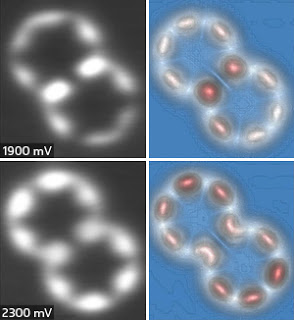

| Visitors Now: | |
| Total Visits: | |
| Total Stories: |

| Story Views | |
| Now: | |
| Last Hour: | |
| Last 24 Hours: | |
| Total: | |
Super benzene oligomers pave the way for new types of quantum computers
From
Scanning tunneling microscopy (STM) is routinely employed by physicists and chemists to capture atomic-scale images of molecules on surfaces. Now, an international team led by Christian Joachim and co-workers from the A*STAR Institute of Materials Research and Engineering has taken STM a step further: using it to identify the quantum states within ‘super benzene’ compounds using STM conductance measurements1. Their results provide a roadmap for developing new types of quantum computers based on information localized inside molecular bonds.
To gain access to the quantum states of hexabenzocoronene (HBC) — a flat aromatic molecule made of interlocked benzene rings — the researchers deposited it onto a gold substrate. According to team member We-Hyo Soe, the weak electronic interaction between HBC and gold is crucial to measuring the system’s ‘differential conductance’ — an instantaneous rate of current charge with voltage that can be directly linked to electron densities within certain quantum states.
After cooling to near-absolute zero temperatures, the team maneuvered its STM tip to a fixed location above the HBC target. Then, they scanned for differential conductance resonance signals at particular voltages. After detecting these voltages, they mapped out the electron density around the entire HBC framework using STM. This technique provided real-space pictures of the compound’s molecular orbitals — quantized states that control chemical bonding.
High-resolution microscopy reveals that a benzene-like molecule known as HBC has a quantized electron density around its ring framework (left). Theoretical calculations show that the observed quantum states change with different tip positions (right, upper/lower images, respectively).
See more and subscribe to NextBigFuture at 2012-12-19 02:22:30 Source: http://nextbigfuture.com/2012/12/super-benzene-oligomers-pave-way-for.html
Source:



